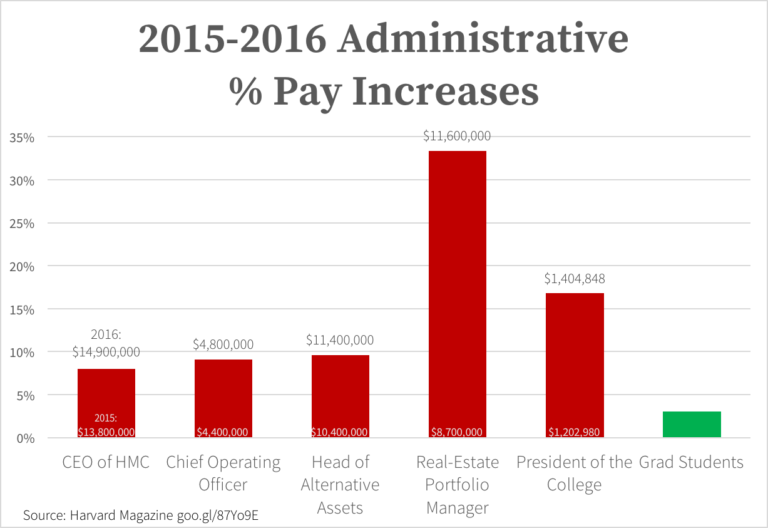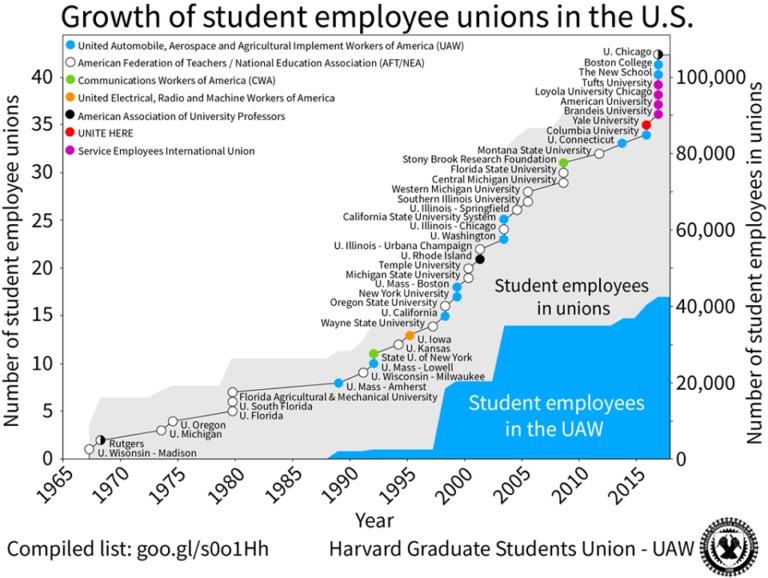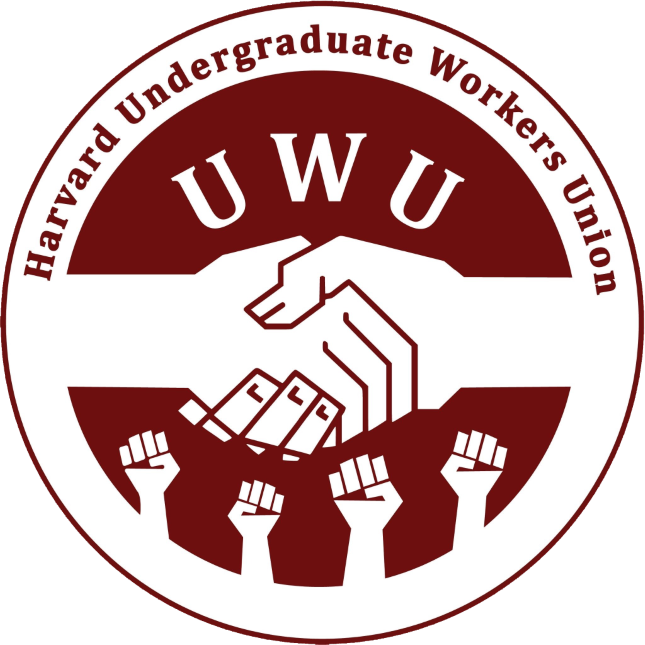Chartmonth
What sort of benefits could we gain through collective bargaining?

This year GSAS PhD students are faced with a wage increase that is below the inflation rate. We’ve been told that this is because of the endowment’s poor performance. But unionized Harvard employees are still seeing wage increases on par or above the inflation rate. They have secure contracts through collective bargaining that maintain their wage increase regardless of yearly fluctuations in endowment performance. With a union, we’d secure stable wage increases so we don’t continue to see what amounts to a pay cut.

As another example, collective bargaining won University of California postdocs the highest salaries of any public university in the US with guaranteed increases above the NIH pay scale for four years. Along with these pay increases, UAW Local 5810 won better health benefits, fully paid parental leave, a fair and just process for sexual harassment and discrimination, and protections against visa delays. Read more here.
Would a wage increase be offset by union dues?
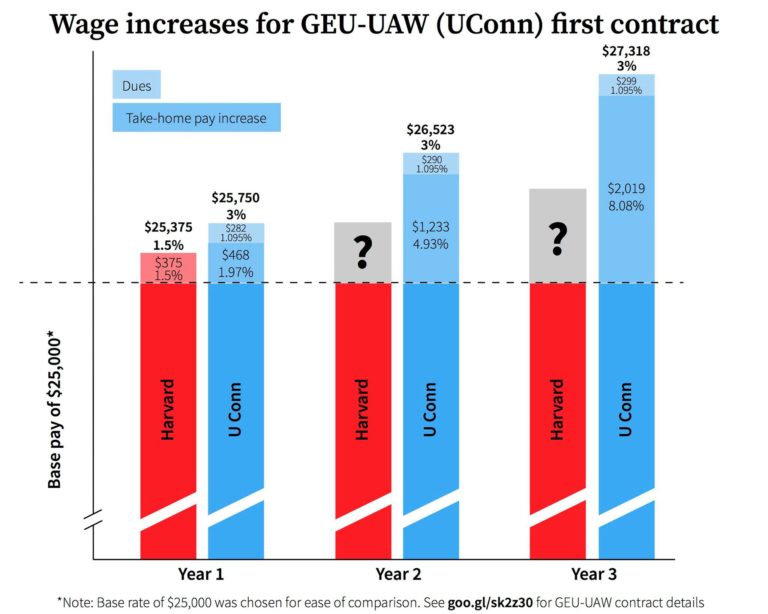
This question is perhaps easiest answered and understood by looking at examples, including the one above from the University of California postdoc workers. At the University of Connecticut, GEU-UAW UConn Graduate Employee Union secured a three-year contract through collective bargaining in April 2015 that guarantees a take-home wage increase of 8.08% over the lifetime of the contract. While wage increases compound each year, dues remain at a base rate 1.44% of your pay. While GSAS PhDs at Harvard have no idea what will happen after next year’s 1.5% wage increase, 2200 GEU-UAW workers have known exactly how much they would make the next year, and the year after that, allowing them to plan their future finances.
Speaking of dues, when do I start paying them, and what will they do?
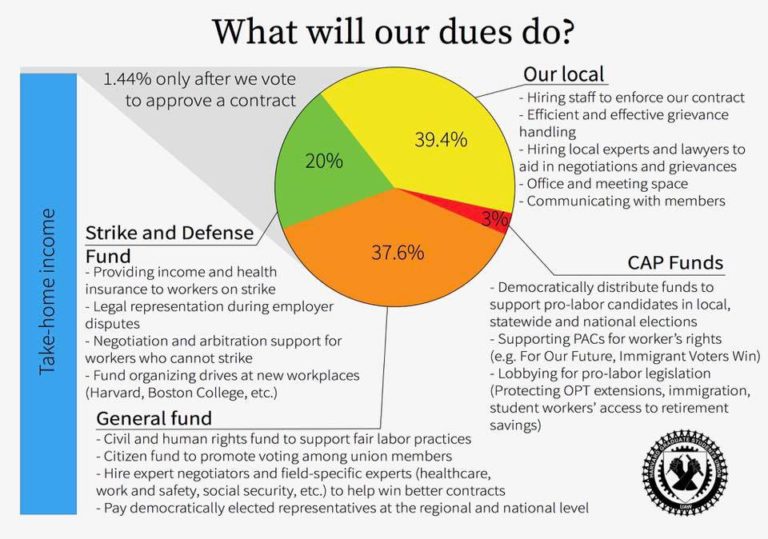
Only after we democratically approve a contract do we start paying our union dues, meaning that we will only begin paying once we are satisfied with the benefits gained through a contract. Once we approve a contract these dues go towards enforcing our contract, winning strong future contracts, and helping workers around the country form and maintain strong unions.
What would it cost Harvard to give GSAS PhDs a 3% wage increase?
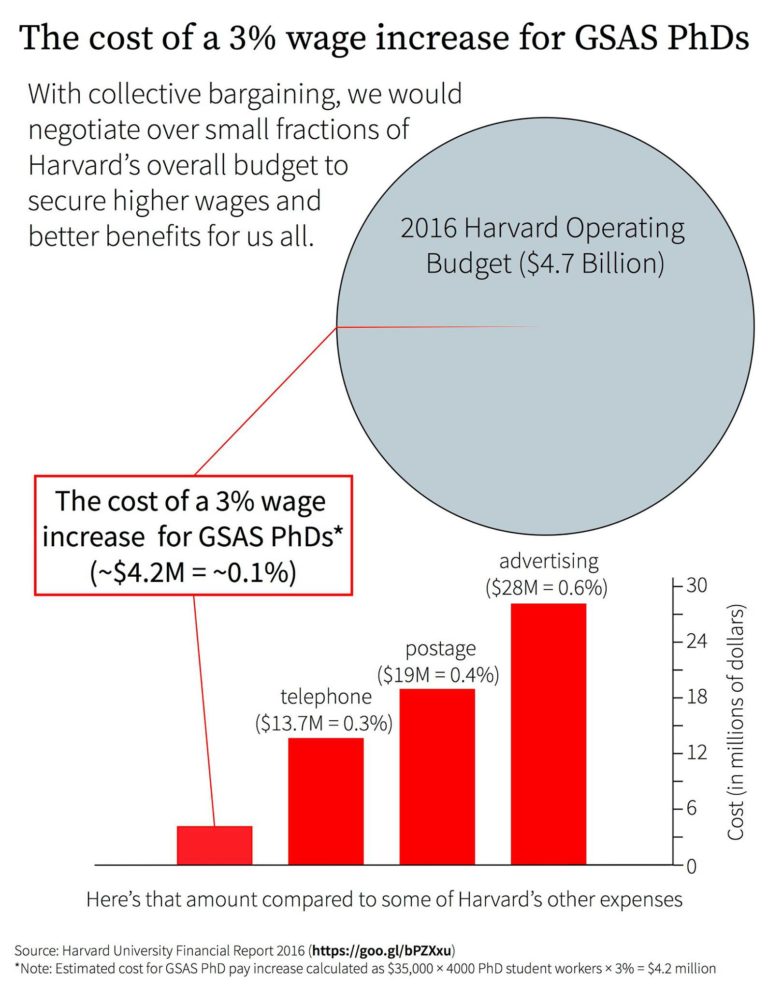
Until we win collective bargaining we won’t make decisions for ourselves with knowledge of how Harvard’s resources are allocated. We’ve estimated what a 3% raise would cost and compared it to some of Harvard’s known expenses. Negotiating the smallest fractions in Harvard’s overall budget would mean enormous differences in our personal budgets.
In comparison, while it was announced that GSAS PhD students would be receiving a 1.5% wage increase next year as a result of poor endowment performance, last year, several members of the Harvard Management Company, responsible for investing the university’s endowment, received significant pay increases for a year that ended with endowment losses. We won’t know until this time next year how their pay changed while we’re taking a pay cut. With a union, we will be able to bargain collectively with the administration to ensure graduate students are a priority.
